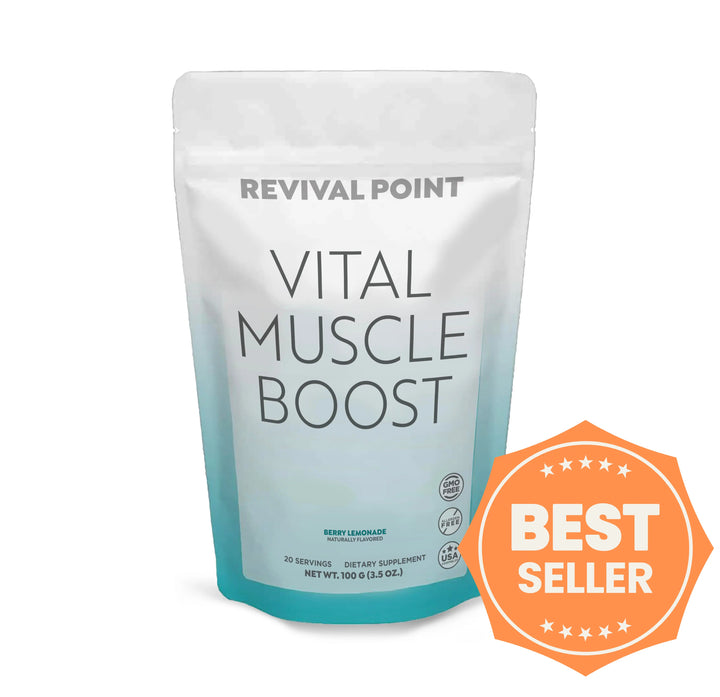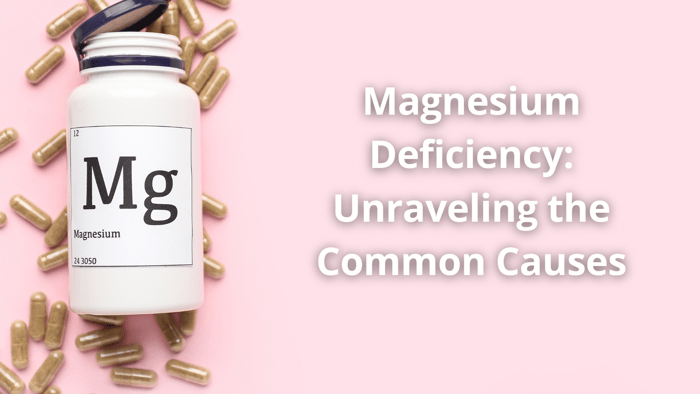Sarcopenia is a common condition that affects many people, especially as they age. It is characterized by the gradual loss of muscle mass, strength, and function, which can ultimately lead to muscle atrophy. As individuals age, the risk of sarcopenia increases, making it essential to understand effective treatment strategies for maintaining muscle health and vitality.
One of the primary methods to combat sarcopenia is through dietary and lifestyle interventions. Ensuring adequate protein intake, engaging in regular physical activity, and incorporating various supplements into the daily routine can all significantly improve muscle mass and strength. Additionally, ongoing research continues to explore potential novel therapies and clinical approaches to further understand and treat sarcopenia effectively.
Key Takeaways
|
Understanding Sarcopenia
Sarcopenia is a condition characterized by the progressive loss of muscle mass, strength, and function, commonly associated with aging. This age-associated muscle atrophy can lead to frailty, decreased mobility, and an increased risk of falls and fractures.
Causes and Risk Factors
There are several factors that contribute to the development of sarcopenia, including a reduction in physical activity, hormonal imbalances, and changes in the neuromuscular system. Moreover, the decline in muscle protein synthesis and increased muscle protein breakdown contribute to the muscle mass loss.
Some common risk factors for sarcopenia include:
- Age: Sarcopenia becomes more prevalent as individuals grow older.
- Sedentary lifestyle: A reduction in physical activity contributes to muscle loss.
- Poor nutrition: Inadequate intake of protein and essential nutrients can affect muscle health.
- Hormonal changes: Declines in growth hormone, testosterone, and estrogen levels are linked to sarcopenia.
Signs and Diagnosis
The diagnosis of sarcopenia involves assessing several aspects of an individual's muscle health. Common signs of sarcopenia include:
- Decreased muscle strength
- Reduced ability to perform daily activities
- Unintentional weight loss
- Slowed gait speed
To diagnose sarcopenia, healthcare professionals may use the following tools:
- Dual-energy X-ray absorptiometry (DEXA): This imaging technique measures muscle mass, bone density, and body fat.
- Bioelectrical impedance analysis (BIA): This non-invasive method estimates body composition, including muscle mass and fat.
- Muscle strength tests: Handgrip strength or lower limb strength tests can offer important insights into muscle function.
In addition to these diagnostic tools, healthcare providers may assess an individual's functional status and medical history to determine their overall risk of sarcopenia. Early identification of pre-sarcopenia, or the initial stage of muscle loss, can help prevent further decline and improve the individual's quality of life.
Dietary Strategies for Muscle Health
Maintaining and improving muscle health is crucial to prevent and manage sarcopenia. The right balance of diet and nutrition plays a significant role in supporting muscle mass and function. The following subsections discuss the essential components of a diet for healthy muscle tissues.
Protein-Rich Foods
Protein is the fundamental building block of muscles. A diet rich in high-quality protein sources supports muscle growth, repair, and overall health. Some examples of protein-rich foods include:
- Lean meats (chicken, turkey, beef)
- Fish (salmon, tuna, mackerel)
- Eggs
- Legumes (beans, lentils)
- Dairy products (yogurt, milk, cheese)
- Plant-based proteins (tofu, tempeh, quinoa)
It is essential to consume sufficient protein daily, as an inadequate protein intake may result in muscle atrophy and exacerbate sarcopenia.
Important Vitamins and Minerals
Certain vitamins and minerals are essential for maintaining muscle health. Among these are:
Vitamin D: Vitamin D plays a necessary role in promoting calcium absorption and bone health, which in turn supports muscle function. Vitamin D deficiency has been linked to muscle weakness and atrophy. Good sources of vitamin D include fish, fortified dairy products, and supplements.
Calcium: Calcium is vital for bone health and proper muscle function. Rich sources of calcium include dairy products, leafy green vegetables, and fortified foods.
Magnesium: Magnesium plays a role in muscle contractions and overall muscle function. It can be found in nuts, seeds, whole grains, and green leafy vegetables.
Incorporating these key vitamins and minerals into your diet may help prevent the onset of sarcopenia and improve muscle health.
Role of Omega-3 Fatty Acids
Omega-3 fatty acids have been shown to have various health benefits, including supporting muscle health. They possess anti-inflammatory properties that may prevent muscle atrophy and aid in muscle recovery. Omega-3 Supplements are also a great addition to add because they can help influence muscle protein synthesis and cellular signaling pathways.
Sources of omega-3 fatty acids include fish (salmon, mackerel, tuna), nuts (walnuts), seeds (chia seeds, flaxseeds), and plant oils (flaxseed oil, soybean oil).
Incorporating these dietary strategies into your daily meal plan can help promote muscle health and potentially prevent or manage sarcopenia and muscle atrophy.
Exercise as a Cornerstone of Treatment
Resistance Training
Resistance training is an essential component of sarcopenia treatment and supplement regimen. It helps in the reversal of muscle atrophy by targeting the loss of muscle mass and function. Resistance exercises such as weightlifting, bodyweight exercises, and resistance bands work by stressing the muscles, promoting growth, and improving overall muscle strength.
Incorporating resistance training into a weekly workout routine can lead to the following benefits:
- Improved muscle mass: Regular resistance training stimulates muscle growth, helping to counteract age-related muscle loss.
- Enhanced mobility: Strengthening muscles improves movement and reduces the risk of falls and injuries in older adults.
- Increased bone density: Resistance exercises also help in maintaining and increasing bone density, reducing the risk of osteoporosis.
Benefits of Aerobic Activities
While resistance training targets muscle strength, aerobic activities play a vital role in improving cardiovascular health and maintaining or increasing physical activity levels. These activities, such as walking, jogging, swimming, and cycling, improve stamina, gait, and balance, which are important factors in addressing sarcopenia.
Regular aerobic exercises can:
- Improve cardiovascular health: By increasing heart rate, aerobic activities help to improve circulation and maintain overall heart health.
- Enhance energy levels: Engaging in regular aerobic activities can lead to increased energy levels as the body becomes more efficient at using oxygen.
- Support weight management: Combining aerobic exercises with a balanced diet can help maintain a healthy weight and prevent obesity-related complications.
Exercise Programs for Older Adults
Exercise programs tailored for older adults should focus on a combination of resistance training and aerobic activities to provide the best results in sarcopenia treatment. It is important to have a combination that addresses strength, mobility, balance, and physical function. Consultation with a healthcare professional or fitness expert is recommended to create an individualized and appropriate exercise program that safely incorporates these elements.
Here are some activities to include in an exercise program for older adults:
- Strength exercises: Bodyweight exercises, resistance bands, or light weights can help improve muscle strength.
- Aerobic activities: Brisk walking, swimming, and cycling are suitable low-impact activities for older individuals.
- Balance and mobility training: Tai chi, yoga, and Pilates are examples of activities that improve balance and mobility.
- Flexibility exercises: Stretching routines can help maintain and improve flexibility to support daily activities.
Incorporating these activities into a regular exercise program can greatly contribute to the reversal of muscle atrophy and overall well-being in older adults.
Key Supplements for Sarcopenia
Efficacy of Creatine
Creatine is a widely recognized supplement for enhancing athletic performance, muscle growth, and overall strength. Research has suggested that creatine supplementation may help prevent muscle atrophy secondary to immobilization or in sarcopenic obesity.
Some key benefits of creatine supplementation include:
- Improved muscle strength and lean body mass
- Enhanced anabolism for muscle growth
- Reduced recovery time from exercise
It's worth considering creatine as a nutritional intervention strategy to prevent muscle atrophy due to its well-documented impact on muscle health and performance.
Whey Protein and Muscle Repair
Whey protein is another popular supplement known for its role in promoting muscle repair and growth. Rich in essential amino acids, whey protein stimulates protein synthesis and aids in recovery, ultimately improving muscle strength.
A regular intake of whey protein contributes to:
- Accelerated muscle growth
- Reduction of muscle breakdown
- Enhanced strength and lean body mass
Including whey protein as part of a balanced diet may help prevent muscle atrophy by promoting muscle maintenance, repair, and overall function.
Beta-Hydroxy-Beta-Methylbutyrate (HMB)
HMB (beta-hydroxy-beta-methylbutyrate) is a metabolite of the essential amino acid leucine, which plays a crucial role in the synthesis of muscle protein. It has been studied for its potential to prevent muscle atrophy through its ability to preserve lean body mass, improve muscle strength, and enhance muscle protein synthesis.
Some advantages of HMB supplementation are:
- Increased muscle strength
- Reduced muscle damage during resistance training
- Improved lean body mass and anabolism
Shop Revival Point's Vital Muscle Boost formulated with myHMB® designed to support muscle health. myHMB® aids in maintaining muscle mass and increasing metabolism, allowing for more efficient calorie burning with less effort. This can be particularly beneficial in sarcopenia treatment, as it helps in preserving muscle strength and function.
$59.95
Vital Muscle Boost combines HMB with Vitamin D3 to promote muscle health throughout the aging process. Scientifically supported, HMB helps preserve muscle mass and protein levels, while Vitamin D enhances calcium metabolism to maintain stronger bones over time.Vital Muscle Boost… read more
Vital Muscle Boost HMB + Vitamin D - Supports Muscle Mass in Ageing individuals

Emerging Therapies and Clinical Approaches
As sarcopenia and muscle atrophy continue to impact the aging population, researchers and medical professionals are exploring various therapies and medications to alleviate or reverse the condition. In this section, we will discuss several emerging therapies, from hormonal supplementation to medication, that show promise in treating sarcopenia.
Testosterone Replacement Therapy
Testosterone, a hormone primarily known for its role in male sexual function, also plays a crucial part in maintaining muscle mass and strength. Declining testosterone levels with age can lead to sarcopenia and muscle atrophy. Testosterone Replacement Therapy (TRT) has thus been explored as a potential treatment to improve muscle health. Research on TRT suggests it may be effective in increasing muscle mass and strength when combined with resistance training. However, it is essential to consult a doctor before considering this option, as too much testosterone can have adverse side effects. If an individual is a suitable candidate, the doctor can provide advice on the appropriate dosage and duration of treatment.
Growth Hormone Supplementation
Another hormonal therapy under investigation is Growth Hormone (GH) Supplementation. Growth hormone, which is involved in promoting muscle growth, declines in the body as we age, contributing to sarcopenia. There is evidence to suggest that growth hormone supplementation may help improve muscle function and increase muscle mass, especially in conjunction with regular resistance training. Nonetheless, it is important to note that side effects might occur with GH supplementation, and it is crucial to seek medical advice before starting any hormone-based treatment.
Medications and Muscle Health
Beyond hormone supplementation, medications are also being studied for their therapeutic potential in treating sarcopenia. For instance, researchers are investigating the effects of drugs that target specific molecular mediators, aiming to recover muscle function and prevent age-related muscle atrophy. Currently, these medications are still in the investigational stage and may require further evaluation in clinical settings to confirm their efficacy and safety. As our understanding of sarcopenia and muscle atrophy deepens, there is the potential for novel strategies to be developed and applied to help individuals maintain muscle health and strength throughout their lives.
Lifestyle and Preventive Measures
Preventing sarcopenia and maintaining muscle health is essential to improve the quality of life and maintain independence as one ages. Age-related sarcopenia typically arises from a combination of various factors, including a sedentary lifestyle and inadequate nutrition. Implementing specific preventive measures can help reduce the risks associated with this condition.
A significant factor in the onset of sarcopenia is a sedentary lifestyle. Engaging in regular physical activities can help combat muscle atrophy. It is crucial to incorporate different forms of exercise into one's routine, including:
- Aerobic exercises (such as walking, swimming, or cycling)
- Resistance training (using weights or resistance bands)
- Balance training (incorporating yoga or tai chi)
Participating in these activities not only preserves muscle mass, but also helps with daily tasks and overall mobility.
Another critical aspect to address is proper nutrition. Consuming a well-balanced diet that includes adequate protein, vitamins, and minerals can significantly impact the prevention of sarcopenia. It has been suggested that nutraceuticals may also play a role in the prevention and treatment of muscle atrophy.
In summary, a combination of regular physical activities and balanced nutrition is crucial in preventing age-related sarcopenia. By maintaining a healthy lifestyle, one can preserve muscle mass, minimize loss of balance, and maintain independence in performing daily tasks. This leads to improved quality of life and the ability to age gracefully.
SFrequently Asked Questions
What are the most effective nutritional supplements recommended for combating sarcopenia?
Protein supplementation, especially with essential amino acids, has shown promising results in improving muscle mass and strength in sarcopenic individuals. Additionally, supplementation with HMB (beta-hydroxy-beta-methylbutyrate) and Vitamin D have been identified as potentially beneficial in the prevention and treatment of sarcopenia.
Can muscle wasting in the elderly be reversed with specific dietary supplements?
Although it is challenging to reverse muscle wasting completely, certain dietary supplements can help slow down or even partially revert the process. For instance, nutritional supplementations containing essential amino acids, vitamins, and other nutrients can support the maintenance of muscle mass and strength in older adults.
How does HMB supplementation impact the management of sarcopenia?
HMB supplementation has been shown to improve muscle strength and function, as well as increase lean body mass in older adults with sarcopenia. This is thought to be due to its ability to promote muscle protein synthesis and reduce muscle protein breakdown.
Are there any particular supplements that can prevent muscle loss during aging?
While there is no magic bullet to entirely prevent muscle loss during aging, certain supplements like protein, Vitamin D, and HMB have demonstrated positive effects in slowing down the progression of sarcopenia.
What role does leucine play in the treatment of sarcopenia?
Leucine, an essential amino acid, plays a vital role in muscle protein synthesis. As such, it can be an important supplement in the treatment of sarcopenia. Adequate leucine intake can stimulate muscle protein synthesis and aid in muscle recovery after exercise, potentially slowing the progression of sarcopenia.
What dietary strategies can enhance the effectiveness of resistance exercise for sarcopenia?
Consuming adequate amounts of high-quality protein, along with essential amino acids like leucine, is critical to maximize the benefits of resistance exercise for individuals with sarcopenia. Additionally, proper hydration and the intake of other essential nutrients, such as Vitamin D, can further support muscle mass and strength maintenance.





